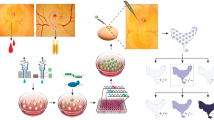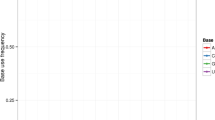Abstract
Piwi gene involves in the germline stem cells self-renewal, transposon silencing and post-transcriptional gene regulation in the majority of organisms; however, the biological function of Piwi gene in poultry remains unclear. Here we cloned the Piwi-like 1 (Piwil1) gene and characterized its expression in the Langshan chickens during the development. The results showed that the PIWIL1 protein was the homolog of mice MIWI and human HIWI proteins (100 % identity), and encoded a cytoplasmic protein including the two conserved domains PAZ and PIWI. In males, the expression of Piwil1 gene showed a bimodal distribution in the gonads during embryogenesis with peaks at embryonic 14.5 and 17.5–18.5 days respectively. After puberty, the expression of Piwil1 gene increased sharply and reached a high level at the sexual maturity. The mRNA expression of Piwil1 gene at 27 weeks of age is 35–40 times that of 0 week of age, indicating that the high expression of Piwil1 gene was essential to maintain the spermatogenesis. In females, the expression of Piwil1 gene showed a unimodal distribution in the embryonic gonads. A strong peak appeared at E16.5–17.5d when the primary oocytes have entered the prophase I of meiosis. Subsequently, the expression of Piwil1 gene decreased gradually and kept at the low level during the embryogenesis. So Piwil1 gene was likely to play an important role during the meiosis I. This report filled in partly the gap of the Piwi gene researches in poultry and defined our research directions in future.




Similar content being viewed by others
References
Lin H, Spradling AC (1997) A novel group of pumilio mutations affects the asymmetric division of germline stem cells in the Drosophila ovary. Development 124:2463–2476
Cox DN, Chao A, Baker J, Chang L, Qiao D, Lin H (1998) A novel class of evolutionarily conserved genes defined by piwi are essential for stem cell self-renewal. Genes Dev 12:3715–3727
Cox DN, Chao A, Lin H (2000) Piwi encodes a nucleoplasmic factor whose activity modulates the number and division rate of germline stem cells. Development 127:503–514
Tolia NH, Joshua-Tor L (2007) Slicer and the argonautes. Nat Chem Biol 3:36–43
Seto AG, Kingston RE, Lau NC (2007) The coming of age for Piwi proteins. Mol Cell 26:603–609
Peters L, Meister G (2007) Argonaute proteins: mediators of RNA silencing. Mol Cell 26:611–623
Aravin AA, Naumova NM, Tulin AV, Vagin VV, Rozovsky YM, Gvozdev VA (2001) Double-stranded RNA-mediated silencing of genomic tandem repeats and transposable elements in the D. melanogaster germline. Curr Biol 11:1017–1027
Brennecke J, Aravin AA, Stark A, Dus M, Kellis M, Sachidanandam R, Hannon GJ (2007) Discrete small RNA-generating loci as master regulators of transposon activity in Drosophila. Cell 128:1089–1103
Aravin AA, Hannon GJ, Brennecke J (2007) The Piwi-piRNA pathway provides an adaptive defense in the transposon arms race. Science 318:761–764
Deng W, Lin H (2002) Miwi, a murine homolog of piwi, encodes a cytoplasmic protein essential for spermatogenesis. Dev Cell 2:819–830
Kuramochi-Miyagawa S, Kimura T, Ijiri TW, Isobe T, Asada N, Fujita Y, Ikawa M, Iwai N, Okabe M, Deng W, Lin H, Matsuda Y, Nakano T (2004) Mili, a mammalian member of piwi family gene, is essential for spermatogenesis. Development 131:839–849
Carmell MA, Girard A, van de Kant HJ, Bourc’his D, Bestor TH, de Rooij DG, Hannon GJ (2007) MIWI2 is essential for spermatogenesis and repression of transposons in the mouse male germline. Dev Cell 12:503–514
Aravin AA, Sachidanandam R, Bourc’his D, Schaefer C, Pezic D, Toth KF, Bestor T, Hannon GJ (2008) A piRNA pathway primed by individual transposons is linked to de novo DNA methylation in mice. Mol Cell 31:785–799
Aravin A, Gaidatzis D, Pfeffer S, Lagos-Quintana M, Landgraf P, Lonino N, Morris P, Brownstein MJ, Kuramochi-Miyagawa S, Nakano T, Chien M, Russo JJ, Ju JY, Sheridan R, Sander C, Zavolan M, Tuschl T (2006) A novel class of small RNAs bind to MILI protein in mouse testes. Nature 442:203–207
Girard A, Sachidanandam R, Hannon GJ, Carmell MA (2006) A germline-specific class of small RNAs binds mammalian Piwi proteins. Nature 442:199–202
Grivna ST, Beyret E, Wang Z, Lin HF (2006) A novel class of small RNAs in mouse spermatogenic cells. Genes Dev 20:1709–1714
Lau NC, Seto AG, Kim J, Kuramochi-Miyagawa S, Nakano T, Bartel DP, Kingston RE (2006) Characterization of the piRNA complex from rat testes. Science 313:363–367
Kuramochi-Miyagawa S, Watanabe T, Gotoh K, Totoki Y, Toyoda A, Ikawa M, Asada N, Kojima K, Yamaguchi Y, Ijiri TW, Hata K, Li E, Matsuda Y, Kimura T, Okabe M, Sakaki Y, Sasaki H, Nakano T (2008) DNA methylation of retrotransposon genes is regulated by Piwi family members MILI and MIWI2 in murine fetal testes. Genes Dev 22:970–975
Sasaki T, Shiohama A, Minoshima S, Shimizu N (2003) Identification of eight members of the argonaute family in the human genome. Genomics 82:323–330
Liu X, Sun Y, Guo J, Ma H, Li J, Dong B, Jin G, Zhang J, Wu J, Meng L, Shou C (2006) Expression of hiwi gene in human gastric cancer was associated with proliferation of cancer cells. Int J Cancer 118:1922–1929
Lee JH, Schütte D, Wulf G, Füzesi L, Radzun HJ, Schweyer S, Engel W, Nayernia K (2006) Stem-cell protein Piwil2 is widely expressed in tumors and inhibits apoptosis through activation of Stat3/Bcl2XL pathway. Hum Mol Genet 15:201–211
Chang GB, Chen R, Zhang Y, Dai AQ, Ma T, Chen GH (2011) Cloning and analysis of piRNAs from testes of three species. Thai J Vet Med 41:193–197
Chen R, Chang GB, Zhang Y, Chen GH, Hu GS, Luan DQ, Liu Y, Dai AQ (2011) Cloning and expression analysis of piRNAs and Piwill gene in quail. Sci Agric Sin 44:1727–1735 (in Chinese)
Zhang Y, Chang GB, Chen R, Dai AQ, Luan DQ, Li JC, Ma T, Hua DK, Chen GH (2012) Cloning and expression profiling of piRNA-like RNAs in chicken. Acta Vet Zootech Sin 43:857–866 (in Chinese)
Yang H, Wang XB, Liu XJ, Liu XF, Li LX, Hu XX, Li N (2012) Cloning and expression analysis of piRNA-like RNAs: adult testis-specific small RNAs in chicken. Mol Cell Biochem 360:347–352
Li LC, Dahiya R (2002) MethPrimer: designing primers for methylation PCRs. Bioinformatics 18:1427–1431
Heinemeyer T, Wingender E, Reuter I, Hermjakob H, Kel AE, Kel OV, Ignatieva EV, Ananko EA, Podkolodnaya OA, Kolpakov FA, Podkolodny NL, Kolchanov NA (1998) Databases on transcriptional regulation: TRANSFAC, TRRD, and COMPEL. Nucleic Acids Res 26:364–370
Megosh HB, Cox DN, Campbell C, Lin H (2006) The role of PIWI and the miRNA machinery in Drosophila germline determination. Curr Biol 16:1884–1894
Harris AN, Macdonald PM (2001) Aubergine encodes a Drosophila polar granule component required for pole cell formation and related to eIF2C. Development 128:2823–2832
Kim TH, Yun TW, Rengaraj D, Lee SI, Lim SM, Seo HW, Park TS, Han JY (2012) Conserved functional characteristics of the PIWI family members in chicken germ cell lineage. Theriogenology 78:1948–1959
Li BC, Chen GH, Wang KH, Qian JF (2001) Study on the origin and development of the chicken embryonic gonad. China Poult 23:58–61 (in Chinese)
Smith CA, Roeszler KN, Bowles J, Koopman P, Sinclair AH (2008) Onset of meiosis in the chicken embryo; evidence of a role for retinoic acid. BMC Dev Biol 8:85
Castañeda J, Genzor P, Bortvin A (2011) piRNAs, transposon silencing, and germline genome integrity. Mutat Res 714:95–104
Hou Y, Yuan J, Zhou X, Fu X, Cheng H, Zhou R (2012) DNA demethylation and USF regulate the meiosis-specific expression of the mouse Miwi. PLoS Genet 8:e1002716
Acknowledgments
The skillful technical assistance to the antibody generation by Invitrogen Inc. (Shanghai, China) is gratefully acknowledged. This study was supported by the National Key Technology R&D Program (2011BAD28B03), National Natural Science Fund (31172199 & 31372297) and the Key Technology R&D Program of Jiangsu Province, China (BE2013392).
Author information
Authors and Affiliations
Corresponding author
Additional information
Rong Chen and Guobin Chang have contributed equally to this study.
Rights and permissions
About this article
Cite this article
Chen, R., Chang, G., Dai, A. et al. Cloning and expression characterization of the chicken Piwil1 gene. Mol Biol Rep 40, 7083–7091 (2013). https://doi.org/10.1007/s11033-013-2831-9
Received:
Accepted:
Published:
Issue Date:
DOI: https://doi.org/10.1007/s11033-013-2831-9




